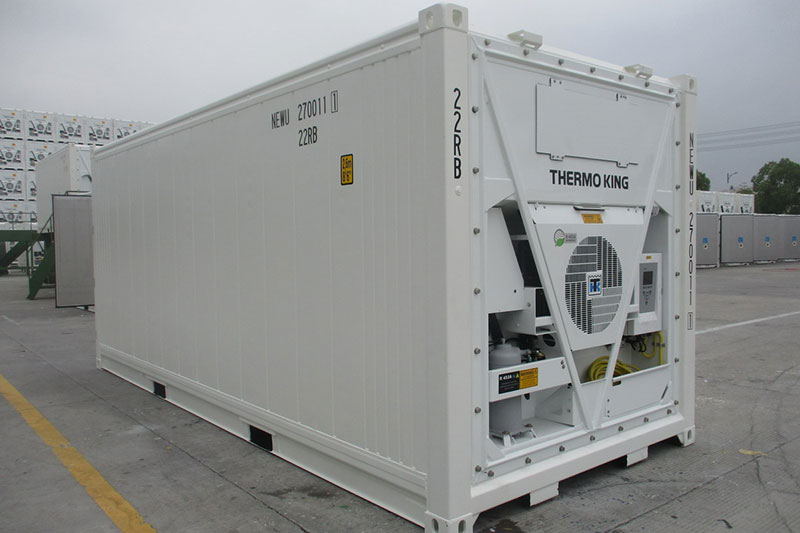CR Container Trading GmbH
CR Container Trading GmbH was founded in 2015 as a privately owned company with headquarters in Hamburg. With the know-how and the experience of more than 20…
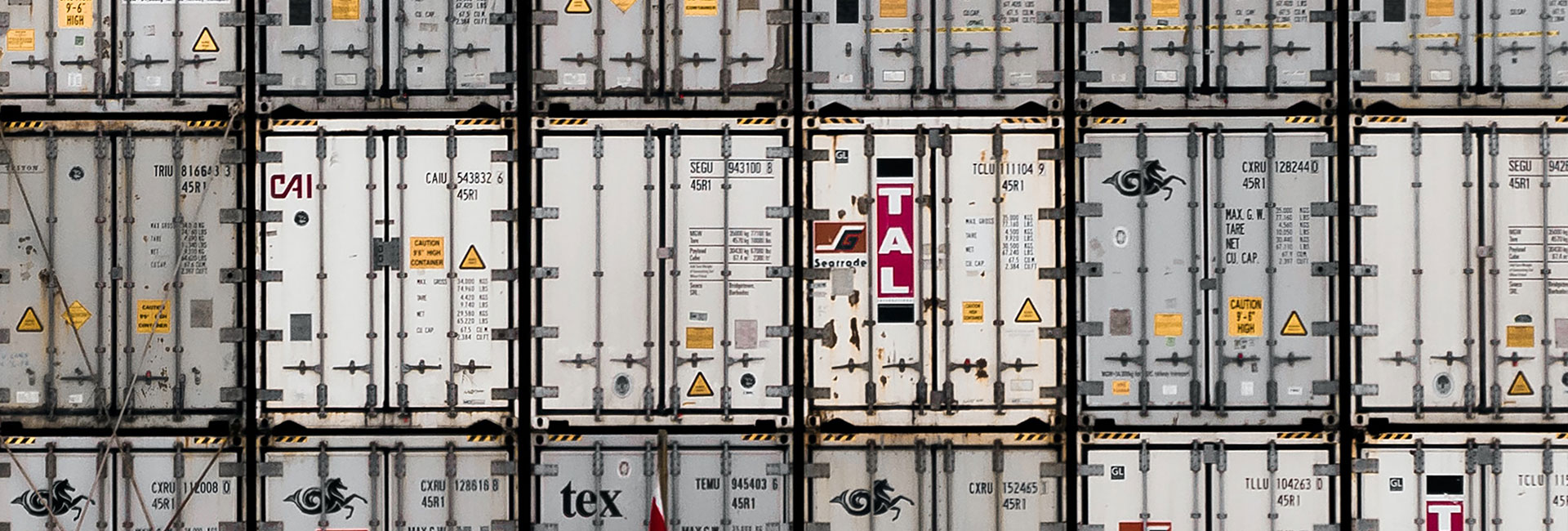
Standard containers are the most common form. As a rule, these are 20 or 40 feet long – six or twelve metres – are fully closed and consist of corrugated, weather-resistant steel. At one end, at least, these have two doors. Some are fitted with extras, for example lashing for transport by forklift.
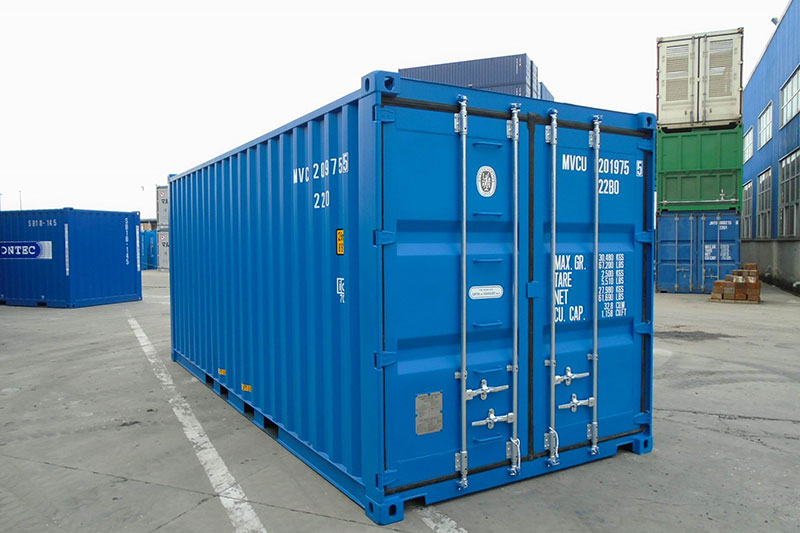
High-cube containers are largely identical with standard containers, yet are 30 cms higher. The advantage is that they offer space for cargo up to 2.70 metres high. Aside from normal dimensions, some high-cube containers are 45 feet long.
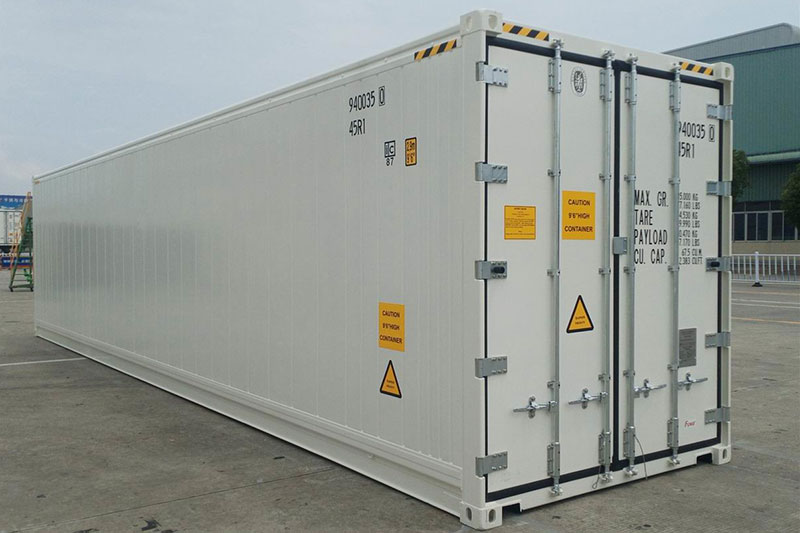
Their detachable metal roof enables hard-top containers to be loaded and unloaded from above. That speeds up loading. These are especially suitable for outsize or very heavy general cargo that can be transported with the roof open.
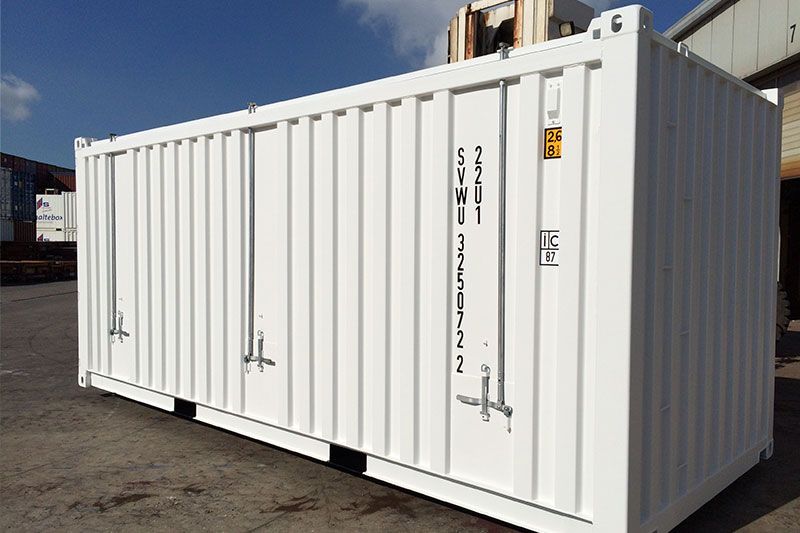
The roof of an open-top container consists of bowed slats / Spriegeln covered by a tarpaulin. This may prevent stacking of the container, but allows protection of oversize freight whilst in transport.
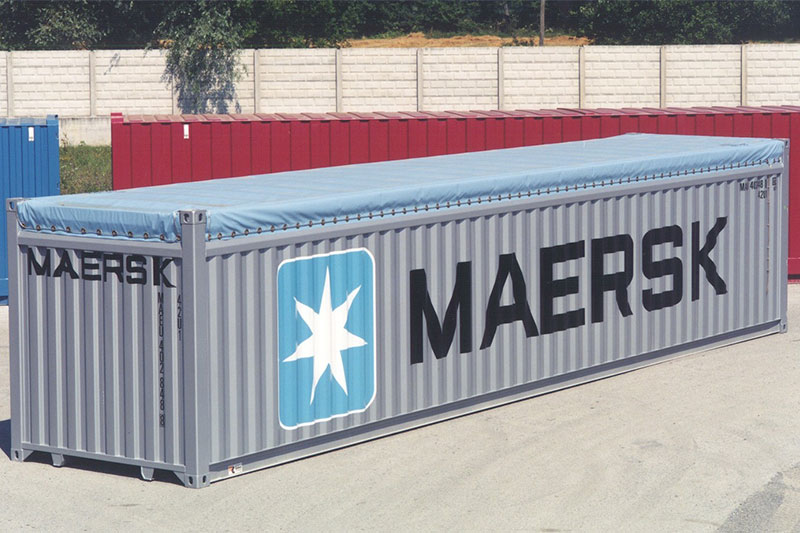
Flat-rack containers consist of a floor that can support extremely heavy loads and stable side walls, but are also available without side walls or a roof. This makes them suitable for transport of bulky freight, for example building machines, which do not fit into a standard container or must be loaded sideways.
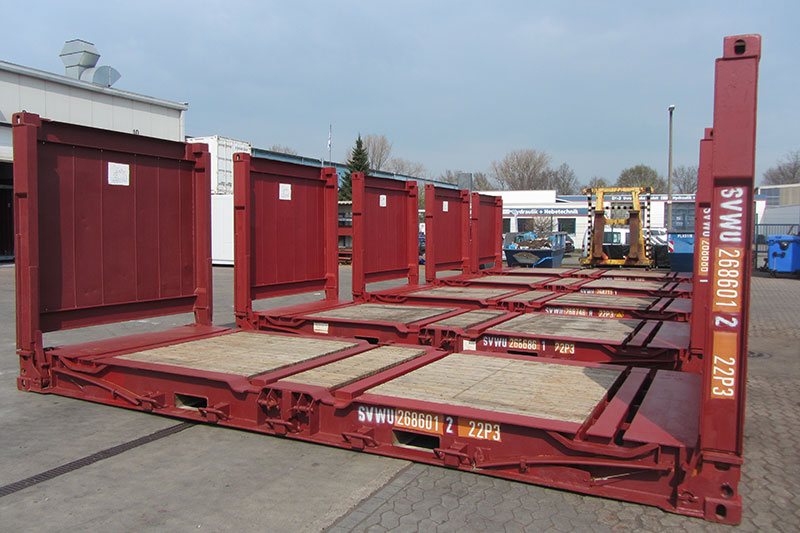
Platform container is the description for a floor without sides or end walls. This is extremely durable. Owing to its comparatively low own weight, it has a higher load capacity than containers of other types.
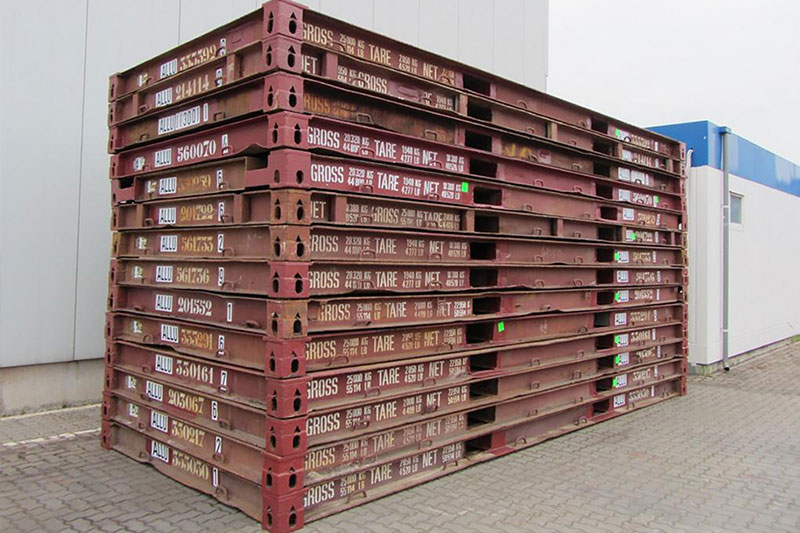
Bulk containers are suitable for transporting suction cargoes such as spices, grain and sand. With the help of tubes, the freight is fed into the container through three appertures and can be poured out again through two small hatches after transport.
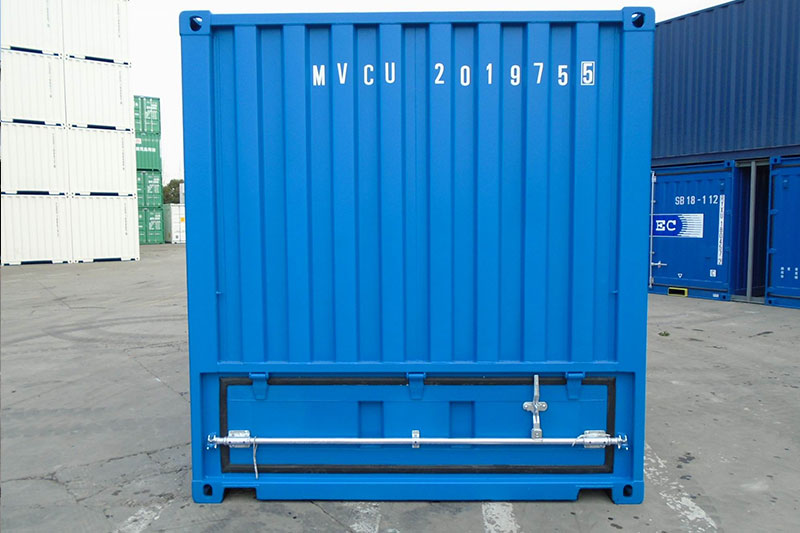
Tank containers are used to transport liquid cargoes such as juices, oils or fuel. They usually consist of a tank mounted in a steel framework.
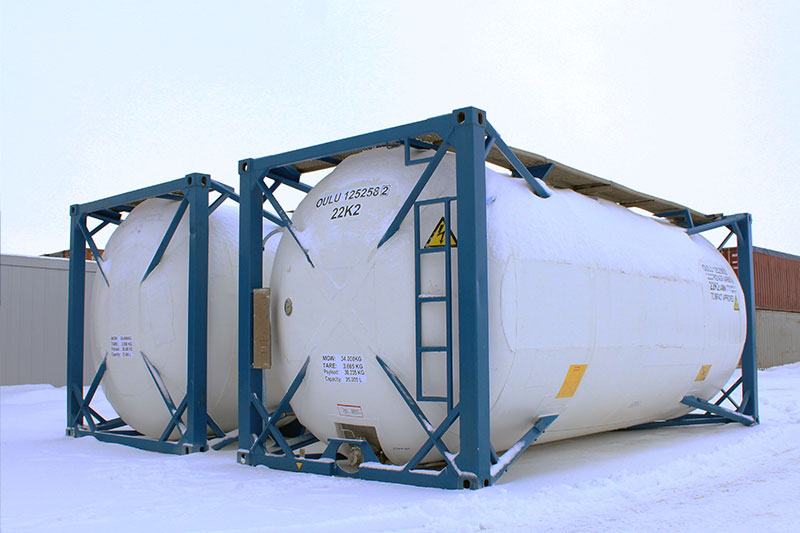
Ventilated containers have waterproof slits on the upper longtitudinal members. These enable air to circulate. Sometimes they also have a fan in addition. Since these are mostly used to transport coffee beans, ‘coffee containers’ is another term for them.
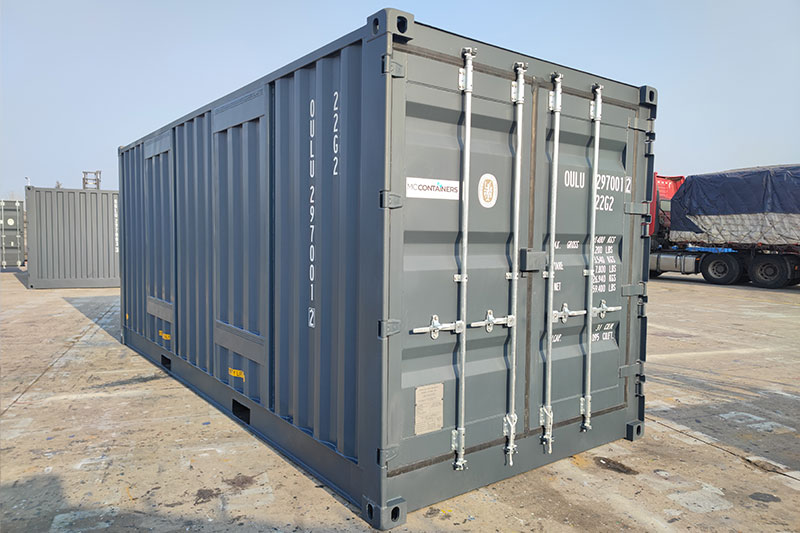
This type of container is specially insulated. Cold air is drawn into the container, and hot air expelled again, through two apertures known as portholes. This keeps the interior temperature constantly cool.
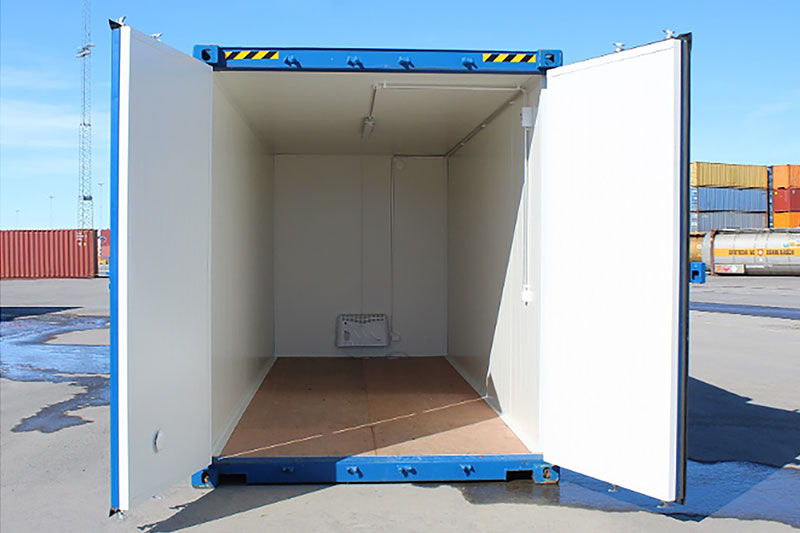
Reefers have an integrated cooling unit to regulate the temperature inside the container. They are therefore suitable for transporting such perishable cargoes as foodstuffs, chemicals or, just recently, Covid-19 vaccines. Installation of the unit inside the container leads to a loss of volume and load capacity.
